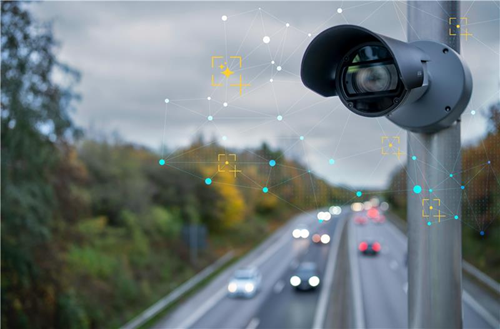Axis Communications has published a new report that explores the state of AI in the global video surveillance industry. Titled The State of AI in Video Surveillance, the report examines the key opportunities, challenges and future trends, as well as the responsible practices that are becoming critical for organisations in their use of AI. The report draws insights from qualitative research as well as quantitative data sources, including in-depth interviews with carefully selected experts from the Axis global partner network.
 |
Axis Communications Sheds Light on Video Surveillance Industry Perspectives on AI with New Report
A leading insight featured in the report is the unanimous view among interviewees that interest in the technology has surged over the past few years, with more and more business customers becoming curious and increasingly knowledgeable about its potential applications.
“AI is a technology that has the potential to touch every corner and every function of the modern enterprise. That said, any implementations or integrations that aim to drive value come with serious financial and ethical considerations. These considerations should prompt organisations to scrutinise any initiative or investment. Axis’s new report not only shows how AI is transforming the video surveillance landscape, but also how that transformation should ideally be approached,” said Mats Thulin, Director AI & Analytics Solutions at Axis Communications.
The migration to the cloud is accelerating
According to the Axis report, the move by businesses from on-premise security server systems to hybrid cloud architectures continues at pace, driven by the need for faster processing, improved bandwidth usage and greater scalability. At the same time, cloud-based technology is being combined with edge AI solutions, which play a crucial role by enabling faster, local analytics with minimal latency, a prerequisite for real-time responsiveness in security-related situations.
By moving AI processing closer to the source using edge devices such as cameras, businesses can reduce bandwidth consumption and better support real-time applications like security monitoring. As a result, the hybrid approach is expected to continue to shape the role of AI in security and unlock new business intelligence and operational efficiencies.
Data integration and consolidation
A trend that is emerging among businesses is the integration of diverse data for a more comprehensive analysis, transforming safety and security. Experts predict that by integrating additional sensory data, such as audio and contextual environmental factors caught on camera, can lead to enhanced situational awareness and greater actionable insights, offering a more comprehensive understanding of events.
Combining multiple data streams can ultimately lead to improved detection and prediction of potential threats or incidents. For example, in emergency scenarios, pairing visual data with audio analysis can enable security teams to respond more quickly and precisely. This context-aware approach can potentially elevate safety, security and operational efficiency, and reflects how system operators can leverage and process multiple data inputs to make better-informed decisions.
Taking a responsible and ethical approach to AI
According to the Axis report, interviewees emphasised that responsible AI and ethical considerations are critical priorities in the development and deployment of new systems, raising concerns about decisions potentially based on biased or unreliable AI. Other risks highlighted include those related to privacy violations and how facial and behavioural recognition could have ethical and legal repercussions.
As a result, a recurring theme among interviewees was the importance of embedding responsible AI practices early in the development process. Interviewees also pointed to regulatory frameworks, such as the EU AI Act, as pivotal in shaping responsible use of technology, particularly in high-risk areas. While regulation was broadly acknowledged as necessary to build trust and accountability, several interviewees also stressed the need for balance to safeguard innovation and address privacy and data security concerns.
“The findings of this report reflect how enterprises are viewing the trend of AI holistically, working to have a firm grasp of both how to use the technology effectively and understand the macro implications of its usage. Conversations surrounding privacy and responsibility will continue but so will the pace of innovation and the adoption of technologies that advance the video surveillance industry and lead to new and exciting possibilities,” Thulin added.
To read the Axis State of AI in Video Surveillance report, click here. For more information about how Axis Solutions can improve security, safety, operational efficiency and business intelligence.
For more information, visit www.axis.com.


